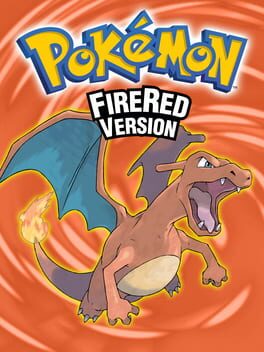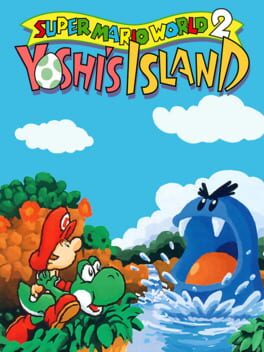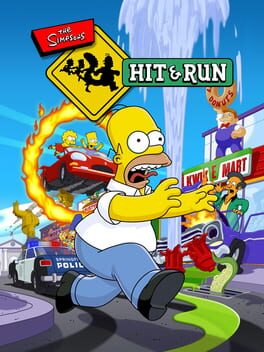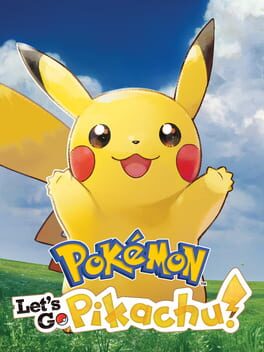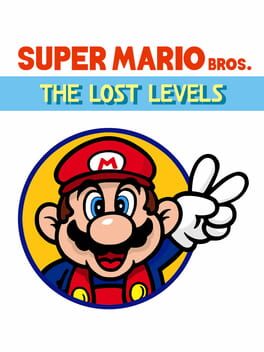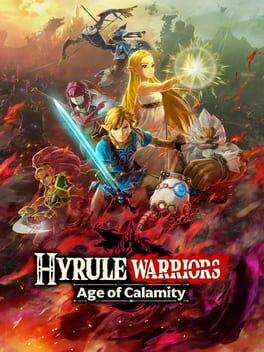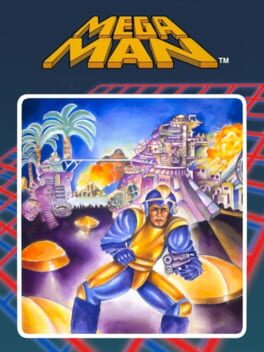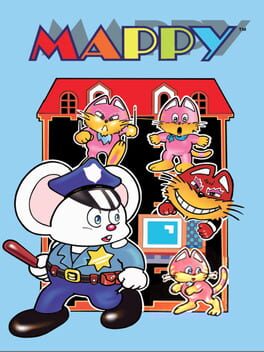Lilcaucasian
Wonder is a pretty standard Mario game, albeit with a lot more creativity than the New Super Mario Bros. games allowed for. The level designs are largely just as good as those games' were, although I'd probably argue NSMBU had slightly better designed levels in general. The game adds to this with additional wonder effects in each level that change up the gameplay, which I think adds a lot to the game overall. Maybe some of the effects aren't as good as others, but I still enjoyed most of them. It's overall a pretty good game, although its complete departure in terms of aesthetic and gimmicks make it a little jarring coming from the NSMB games, which depending on what you thought about them might be a good thing. The whole 5th world sucks though.
FireRed and LeafGreen are solid, basic Pokemon experiences, however with the potential to be so much more than just a remake of the first games. There are so many random limitations that try to keep the experience "pure" with how encounters and evolution work that just shouldn't be there, and would improve the games massively if they weren't. Aside from some of these minor issues and other flaws kept from the originals, they're solid games.
Tears of the Kingdom had to be many things. It needed to be a sequel to Breath of the Wild, but it also needed to differentiate itself. It needed to find a way to bridge this new style of Zelda games with the old, while still maintaining its character. It needed to fix the problems of its prequel, while managing to innovate on its own. Tears of the Kingdom accomplishes none of this. I want to make it very clear that in a vacuum there is a good game hiding somewhere underneath the unfulfilled potential, but it's buried under so many problems that calling it anything beyond mediocre is an exaggeration. There are a lot of things to say about this game, so I'm going to break it up into 3 sections to make things more easily digestible: how this game is as a sequel to Breath of the Wild and how it doesn’t differentiate itself, how it is as a Zelda game, and how it holds up on its own.
Starting with how this game performs as a sequel to Breath of the Wild, I don't think it comes even close to holding up to the nigh impossible to meet expectations that game set. For starters, the map is reused. Now, the point of this game and its prequel was to explore this vast map, and it is absolutely no fun to do this a second time. The fact that many of the Koroks were all still in the same places was what really made me feel like this game had nothing new to offer in terms of its world. Instead, there are plenty of terrible copy and paste sign propping missions as well as other Ubisoft tier filler. Most of these assorted fetch quests and other wastes of time get boring before they're even over. I ended up looking up most of the rewards for these before finishing the quests because I didn’t want to play anymore of this game, and found out that almost none of them were even close to worthwhile. The only other new additions to the map come in the form of two new layers: the sky and the depths. Neither of these new areas really brings much to the table, but starting with the sky in particular, most of it is these tiny islands with terrible shrine quests that take way too long. The disappointment I felt after learning that the tutorial island was the largest island by several orders of magnitude is the memory that pops into my head most times I think about this game. The depths are also wholly uninteresting, they’re almost completely homogeneous, and the last thing I wanted to do after hunting down the same towers from Breath of the Wild was to do it for a third time but in the dark. There are some reused bosses down there, and it feels like much more of a new game than the other two layers, but it’s still very disappointing, and doesn’t really feel new.
This game also reuses its core structure from Breath of the Wild. Unfortunately, this game was not made to fit that structure and ends up feeling like a worse retread of many of that game’s concepts. Some examples of this include the dungeons which I will talk about in greater detail later and the general progression. The story plays out in almost the exact same manner as the first game, and even though its individual story beats are different the fundamental concepts are almost identical. The things that were changed made little to no sense, and I didn’t bother engaging with the story all too much. This of course ties into some of Breath of the Wild’s core mechanics, such as the spirit orb progression of shrines and the weapon durability system. Now, I liked both of these things in Breath of the Wild, but in this game they both feel gimped. For starters, the shrines are way worse in this game than in Breath of the Wild; most puzzles can be solved in two seconds with the broken Ultrahand ability, so the usage of spirit orbs to progress had to evolve with this. Because you now have a maximum of 40 hearts instead of 20, you can turn in more spirit orbs. The unfortunate part about this is that many bosses and other enemies now do way more damage to compensate. This leads to a bunch of extremely cheap kills, and many abrupt difficulty spikes in an otherwise painfully easy game. This means that you are required to explore the world to earn heart containers from shrines, even though the world is reused, to gain less worthwhile and less satisfying heart containers to fight most of the game’s bosses. The armor system isn’t much better, it’s equally grindy and tedious. Furthermore, the fact that the game requires you to explore the same map before progression ironically defeats the entire point of games like this. It’s like the game is telling you you have the freedom to do anything but to choose how you actually approach the game. This is just poor design, no matter what angle it’s taken from. Weapon durability has met an even worse fate. The great thing about weapon durability in the last game was that it made you think outside of the box and use unconventional things to attack enemies when you were in a bad spot with your weapon inventory. Now you’re always in a bad spot, as every weapon is rusted now and thus way less durable. The band-aid the developers haphazardly slapped on was to add a fuse mechanic to increase durability and damage or add special properties. This is a good idea on paper, but the interface is so clunky it’s impossible to use on the fly. You have to pick up and hold the items you want to fuse to your weapons, drop them to the ground, and then navigate the actual fuse interface. It’s clear from this description that this doesn’t work in combat, which meant I mostly just avoided it the whole game when combined with the ridiculous health issues. A combat system being so poor that it made me want to avoid combat altogether is a first for this series, and I’ve beaten Zelda II.
Tears of the Kingdom doesn’t really stack up as a Zelda game. Looking at some of the best and most acclaimed games in the series: Twilight Princess, Wind Waker, Link to the Past, Ocarina of Time, and even Breath of the Wild, the elements of this series aren’t portrayed here very well. Zelda is a very simple set of games all things considered as it is largely built on the harmony between two concepts; exploration, and intuitive puzzle solving. Each of these games explores these two ideas to different extents, but they’re always still there. Tears of the Kingdom on the other hand has inherently unsatisfying exploration due to the map reuse and the biggest issue of all: the awful dungeons and puzzles. When it was revealed dungeons were coming back, most people were pretty excited. None of us expected they’d just be worse versions of the Divine Beasts from the previous game. The best of these has to be the Wind Temple, mostly due to the great music of the boss and the atmosphere. The puzzles are still terrible though. The Fire Temple is generally tolerable, and the leadup to the Death Mountain section in general is pretty cool, but every single part of this dungeon can be easily skipped by climbing. The Water Temple is awful and extremely forgettable, but the Lightning Temple might be the worst segment I’ve ever played in a Nintendo game. Every puzzle here is a boring insult to the player’s intelligence, and on top of that the boss is awful. It’s the worst example of the problems with one hit kills I mentioned earlier, and it’s incredibly frustrating due to another crippling issue this game has in the sage abilities. These all effectively function as AI controlled companions that fight for you, and they’re all required for the dungeons you get them in. The problem is that they all correspond to the same button input and almost seem like they’re trying to screw you over. When you need them, they’re gone. When you don’t they’re running around in your face trying to get you to accidentally hit the A button to activate their abilities to blow some monster parts into the abyss, or turn your screen yellow. The biggest problem with this is that in the Lightning Temple, due to the unfriendly nature of the environment you will have likely completed all of the other dungeons before this one, and have 3 other sages running around while you’re trying to activate the one you need. This and the Temple of the Ocean King from Phantom Hourglass are in hot contention for the worst dungeon in the series.
Tears of the Kingdom’s identity as a game largely rests on its new rune system. It essentially took most of the abilities from the last game and made them worse. Recall is a worse version of stasis, ascend is a worse version of Revali’s Gale, you can’t create bombs anymore, and I’ve already mentioned fuse. The final rune however is arguably the most important. Ultrahand is the biggest factor in making this game stand out, and credit where credit is due it is genuinely impressive to see the kinds of things that people have been able to create with its building system. The only problem with it is that it barely works. The system is extremely janky, and parts never attach where you want them. The kind of thinking you need to solve complex puzzles with this mechanic is made obsolete due to the terrible controls and implementation, so the developers made all of the puzzles extremely easy. Trying to make anything more complex than a small vehicle is extremely frustrating. The 5th semi-dungeon in the depths makes the most extensive use of this mechanic, and it’s clear from this section why the developers didn’t push this concept any further. The dungeon is just as bad as the rest of them, but this time with an added layer of irritation from the broken game design. Every puzzle has an immediately obvious solution, it just requires wrestling with the game for 15 minutes to build it. The nice thing is that due to ultrahand’s broken nature, you can just use it to bypass most of these with a flying vehicle after another several minutes of wrestling with the controls. For as much of an achievement as this system is for the developers, just like the rest of the game it fell flat for me.
I don’t want to give this game anything lower than a 5/10 for one specific reason: if you haven’t played Breath of the Wild, this is a spectacular game. It seems like most of the people who love this game fall into that camp, and that’s great. I’m happy that they found something they enjoy. However, that doesn’t excuse the fact that this game is a poor follow up to the game we all loved six years ago. I won’t punish a game for not living up to its prequel: I still love games like Wind Waker and Twilight Princess even if they aren’t as good as Ocarina of Time. I will however dock points for being derivative, having this dire lack of new ideas and just generally being a worse game than Breath of the Wild. And that comparison to Breath of the Wild is probably the worst thing about this game. What is its identity? Ultrahand barely differentiates it. You can talk about Zelda II without mentioning Zelda I. You can talk about Majora’s Mask without Ocarina of Time. You can talk about The Minish Cap without Four Swords or Four Swords Adventures. You can talk about Spirit Tracks without Phantom Hourglass. Can you really do the same with Breath of the Wild and Tears of the Kingdom?
Starting with how this game performs as a sequel to Breath of the Wild, I don't think it comes even close to holding up to the nigh impossible to meet expectations that game set. For starters, the map is reused. Now, the point of this game and its prequel was to explore this vast map, and it is absolutely no fun to do this a second time. The fact that many of the Koroks were all still in the same places was what really made me feel like this game had nothing new to offer in terms of its world. Instead, there are plenty of terrible copy and paste sign propping missions as well as other Ubisoft tier filler. Most of these assorted fetch quests and other wastes of time get boring before they're even over. I ended up looking up most of the rewards for these before finishing the quests because I didn’t want to play anymore of this game, and found out that almost none of them were even close to worthwhile. The only other new additions to the map come in the form of two new layers: the sky and the depths. Neither of these new areas really brings much to the table, but starting with the sky in particular, most of it is these tiny islands with terrible shrine quests that take way too long. The disappointment I felt after learning that the tutorial island was the largest island by several orders of magnitude is the memory that pops into my head most times I think about this game. The depths are also wholly uninteresting, they’re almost completely homogeneous, and the last thing I wanted to do after hunting down the same towers from Breath of the Wild was to do it for a third time but in the dark. There are some reused bosses down there, and it feels like much more of a new game than the other two layers, but it’s still very disappointing, and doesn’t really feel new.
This game also reuses its core structure from Breath of the Wild. Unfortunately, this game was not made to fit that structure and ends up feeling like a worse retread of many of that game’s concepts. Some examples of this include the dungeons which I will talk about in greater detail later and the general progression. The story plays out in almost the exact same manner as the first game, and even though its individual story beats are different the fundamental concepts are almost identical. The things that were changed made little to no sense, and I didn’t bother engaging with the story all too much. This of course ties into some of Breath of the Wild’s core mechanics, such as the spirit orb progression of shrines and the weapon durability system. Now, I liked both of these things in Breath of the Wild, but in this game they both feel gimped. For starters, the shrines are way worse in this game than in Breath of the Wild; most puzzles can be solved in two seconds with the broken Ultrahand ability, so the usage of spirit orbs to progress had to evolve with this. Because you now have a maximum of 40 hearts instead of 20, you can turn in more spirit orbs. The unfortunate part about this is that many bosses and other enemies now do way more damage to compensate. This leads to a bunch of extremely cheap kills, and many abrupt difficulty spikes in an otherwise painfully easy game. This means that you are required to explore the world to earn heart containers from shrines, even though the world is reused, to gain less worthwhile and less satisfying heart containers to fight most of the game’s bosses. The armor system isn’t much better, it’s equally grindy and tedious. Furthermore, the fact that the game requires you to explore the same map before progression ironically defeats the entire point of games like this. It’s like the game is telling you you have the freedom to do anything but to choose how you actually approach the game. This is just poor design, no matter what angle it’s taken from. Weapon durability has met an even worse fate. The great thing about weapon durability in the last game was that it made you think outside of the box and use unconventional things to attack enemies when you were in a bad spot with your weapon inventory. Now you’re always in a bad spot, as every weapon is rusted now and thus way less durable. The band-aid the developers haphazardly slapped on was to add a fuse mechanic to increase durability and damage or add special properties. This is a good idea on paper, but the interface is so clunky it’s impossible to use on the fly. You have to pick up and hold the items you want to fuse to your weapons, drop them to the ground, and then navigate the actual fuse interface. It’s clear from this description that this doesn’t work in combat, which meant I mostly just avoided it the whole game when combined with the ridiculous health issues. A combat system being so poor that it made me want to avoid combat altogether is a first for this series, and I’ve beaten Zelda II.
Tears of the Kingdom doesn’t really stack up as a Zelda game. Looking at some of the best and most acclaimed games in the series: Twilight Princess, Wind Waker, Link to the Past, Ocarina of Time, and even Breath of the Wild, the elements of this series aren’t portrayed here very well. Zelda is a very simple set of games all things considered as it is largely built on the harmony between two concepts; exploration, and intuitive puzzle solving. Each of these games explores these two ideas to different extents, but they’re always still there. Tears of the Kingdom on the other hand has inherently unsatisfying exploration due to the map reuse and the biggest issue of all: the awful dungeons and puzzles. When it was revealed dungeons were coming back, most people were pretty excited. None of us expected they’d just be worse versions of the Divine Beasts from the previous game. The best of these has to be the Wind Temple, mostly due to the great music of the boss and the atmosphere. The puzzles are still terrible though. The Fire Temple is generally tolerable, and the leadup to the Death Mountain section in general is pretty cool, but every single part of this dungeon can be easily skipped by climbing. The Water Temple is awful and extremely forgettable, but the Lightning Temple might be the worst segment I’ve ever played in a Nintendo game. Every puzzle here is a boring insult to the player’s intelligence, and on top of that the boss is awful. It’s the worst example of the problems with one hit kills I mentioned earlier, and it’s incredibly frustrating due to another crippling issue this game has in the sage abilities. These all effectively function as AI controlled companions that fight for you, and they’re all required for the dungeons you get them in. The problem is that they all correspond to the same button input and almost seem like they’re trying to screw you over. When you need them, they’re gone. When you don’t they’re running around in your face trying to get you to accidentally hit the A button to activate their abilities to blow some monster parts into the abyss, or turn your screen yellow. The biggest problem with this is that in the Lightning Temple, due to the unfriendly nature of the environment you will have likely completed all of the other dungeons before this one, and have 3 other sages running around while you’re trying to activate the one you need. This and the Temple of the Ocean King from Phantom Hourglass are in hot contention for the worst dungeon in the series.
Tears of the Kingdom’s identity as a game largely rests on its new rune system. It essentially took most of the abilities from the last game and made them worse. Recall is a worse version of stasis, ascend is a worse version of Revali’s Gale, you can’t create bombs anymore, and I’ve already mentioned fuse. The final rune however is arguably the most important. Ultrahand is the biggest factor in making this game stand out, and credit where credit is due it is genuinely impressive to see the kinds of things that people have been able to create with its building system. The only problem with it is that it barely works. The system is extremely janky, and parts never attach where you want them. The kind of thinking you need to solve complex puzzles with this mechanic is made obsolete due to the terrible controls and implementation, so the developers made all of the puzzles extremely easy. Trying to make anything more complex than a small vehicle is extremely frustrating. The 5th semi-dungeon in the depths makes the most extensive use of this mechanic, and it’s clear from this section why the developers didn’t push this concept any further. The dungeon is just as bad as the rest of them, but this time with an added layer of irritation from the broken game design. Every puzzle has an immediately obvious solution, it just requires wrestling with the game for 15 minutes to build it. The nice thing is that due to ultrahand’s broken nature, you can just use it to bypass most of these with a flying vehicle after another several minutes of wrestling with the controls. For as much of an achievement as this system is for the developers, just like the rest of the game it fell flat for me.
I don’t want to give this game anything lower than a 5/10 for one specific reason: if you haven’t played Breath of the Wild, this is a spectacular game. It seems like most of the people who love this game fall into that camp, and that’s great. I’m happy that they found something they enjoy. However, that doesn’t excuse the fact that this game is a poor follow up to the game we all loved six years ago. I won’t punish a game for not living up to its prequel: I still love games like Wind Waker and Twilight Princess even if they aren’t as good as Ocarina of Time. I will however dock points for being derivative, having this dire lack of new ideas and just generally being a worse game than Breath of the Wild. And that comparison to Breath of the Wild is probably the worst thing about this game. What is its identity? Ultrahand barely differentiates it. You can talk about Zelda II without mentioning Zelda I. You can talk about Majora’s Mask without Ocarina of Time. You can talk about The Minish Cap without Four Swords or Four Swords Adventures. You can talk about Spirit Tracks without Phantom Hourglass. Can you really do the same with Breath of the Wild and Tears of the Kingdom?
1986
1986
Metroid, while being an incredibly important and influential game, has some very crippling problems that generally make it not very fun to play today. The game has the high difficulty of many of the games of its time, which would normally be fine, but most games prior to the N64/PS1 generation were more keen on throwing unsolvable puzzles or unfair enemy combinations at players. This makes the game feel cheap, and thus none of the accomplishments really feel earned. Thank god for the lack of a lives system. The ability to only carry 1 weapon also hurts this game, as the Ice Beam is borderline necessary to beat the game but doesn't kill enemies quickly enough to be satisfying. Overall, it can be fun at times but has a lot of problems that make this game ultimately skippable. Very important to video game history, borderline unplayable today without savestates.
Age of Calamity is a really fun, albeit simple, semi-prequel to Breath of the Wild. The gameplay is surprisingly varied for how simple games like this tend to be, and there are many different skills, techniques, and characters. It's probably best played in short bursts to maintain the novelty however.
Dual Destinies is a mess, and easily the worst of the mainline Ace Attorney games, but the core gameplay is still definitely fun. Most of the environments and cases feel pretty generic, and it feels like the events and character developments of Apollo Justice were completely ignored. Overall, it's a fun game but nothing worth playing for someone who isn't invested in this series.
1987
1983


